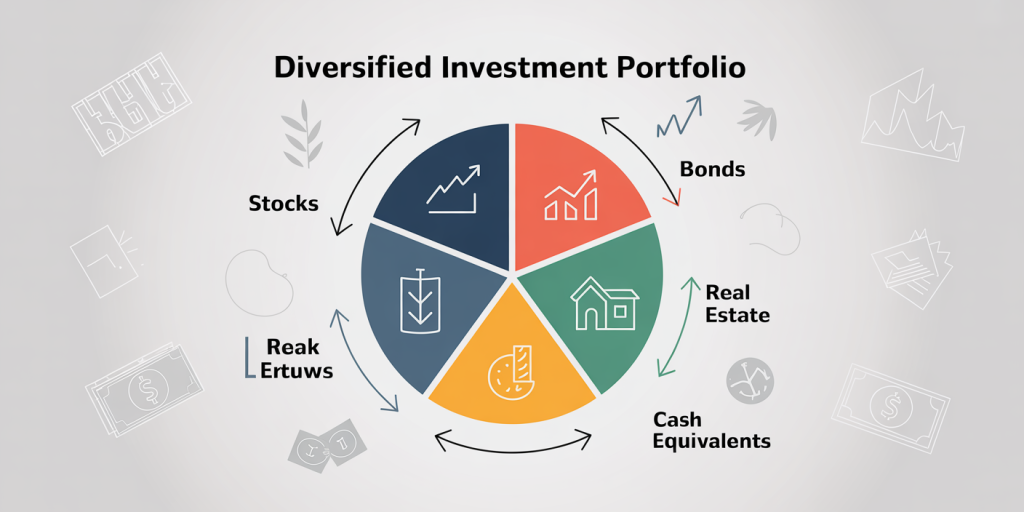Asset allocation is a fundamental concept in personal finance and investment management. For beginners, understanding how to properly distribute investments across various asset classes is crucial to achieving financial goals while managing risks. This article explores the core principles of asset allocation, offers practical guidance, and presents real-world insights to help new investors make informed decisions.
Understanding the Basics of Asset Allocation
Asset allocation refers to the strategy of dividing an investment portfolio among different asset categories such as stocks, bonds, real estate, and cash equivalents. The primary objective is to balance risk and reward according to an individual’s financial goals, risk tolerance, and investment horizon.

For example, consider a 30-year-old investor aiming for retirement in 35 years. They might allocate 70% of their portfolio to equities for growth and 30% to bonds for stability. Conversely, a 60-year-old nearing retirement might prefer a more conservative mix, such as 40% stocks and 60% bonds, focusing more on capital preservation.
Statistically, diversification through asset allocation reduces overall portfolio volatility. According to a study by Vanguard, diversified portfolios generally yield better risk-adjusted returns over time compared to portfolios concentrated in a single asset class. This diversification helps investors weather economic downturns and market shocks.
Common Asset Classes and Their Characteristics
Understanding the characteristics of each asset class is essential in constructing an effective asset allocation. The major asset classes include:
Stocks (Equities): Represent ownership in companies and offer potential for high returns. However, they also carry higher volatility. The S&P 500’s average annual return has been around 10% historically, but some years have seen losses exceeding 20%.
Bonds (Fixed Income): Debt instruments that provide regular interest payments and return of principal at maturity. They are generally less volatile and provide income stability. For instance, U.S. Treasury bonds are considered low-risk, with average returns between 2-5% depending on maturity.
Cash and Cash Equivalents: This includes money market funds, certificates of deposit, and Treasury bills. These assets offer high liquidity and safety but typically yield low returns, often below inflation rates.
Real Estate: Investing in property or Real Estate Investment Trusts (REITs) provides income through rents and capital appreciation. Real estate has shown to have a low correlation with stocks and bonds, making it a valuable diversification tool.
| Asset Class | Expected Return (Annual Avg.) | Risk Level (Volatility) | Income Generation | Liquidity |
|---|---|---|---|---|
| Stocks | ~10% | High | Dividends | High (Publicly traded) |
| Bonds | 2-5% | Moderate | Interest Payments | Moderate |
| Cash Equivalents | 0.5-2% | Low | Minimal | Very High |
| Real Estate | 8-12% (incl. rent + appreciation) | Moderate | Rental Income | Low to Moderate |
This table highlights the trade-offs between return, risk, and liquidity inherent in each asset class, guiding beginners in their allocation choices.
Risk Tolerance and Time Horizon: The Dual Pillars of Asset Allocation
Two critical factors influence how an investor should allocate assets: risk tolerance and investment time horizon.
Risk Tolerance: It is the degree of variability in investment returns that an investor is willing to withstand. Younger investors, with many years ahead, can generally tolerate more risk because they have time to recover from potential losses. Tools like risk questionnaires help quantify this tolerance. For instance, a person who feels uneasy seeing their portfolio drop 10% may prefer a conservative allocation with a higher percentage of bonds.
Time Horizon: The timeframe for achieving financial goals heavily impacts asset allocation. A 20-year horizon allows for a higher allocation to growth assets like stocks, which have the potential to outpace inflation but are volatile in the short term. In contrast, a 5-year goal suggests the need for capital preservation, so emphasis should be on fixed income and cash equivalents.
Practical case: Jane, age 25, wants to buy a house in 5 years, and also save for retirement in 40 years. For the house fund, she chooses a conservative blend of 20% stocks, 50% bonds, and 30% cash equivalents to minimize short-term risk. For retirement, she adopts an aggressive 80% stocks and 20% bonds allocation, leveraging time to ride out market fluctuations.
How to Build an Asset Allocation Portfolio: Step-by-Step
Starting a portfolio can feel overwhelming, but following a clear, structured approach simplifies the process.
1. Define Your Financial Goals: Are you investing for retirement, buying a house, or funding education? Goals determine the appropriate investment horizon and risk level.
2. Assess Risk Tolerance: Use questionnaires or consult with financial advisors to identify your comfort level with market ups and downs.
3. Decide the Asset Mix: Based on goals and risk tolerance, assign percentages to asset classes. Beginners often start with simplified models such as the “60/40” portfolio—60% stocks and 40% bonds—which has been a long-standing benchmark for balanced risk and reward.
4. Choose Investments: Select specific mutual funds, ETFs, or individual securities representing each asset class. For example, low-cost index funds like Vanguard’s Total Stock Market ETF (VTI) and Total Bond Market ETF (BND) provide broad diversification and cost-efficiency.
5. Regularly Rebalance: Over time, market movements will shift the portfolio’s allocation. Rebalancing involves buying or selling assets to maintain the target allocation, ensuring risk remains aligned with your preferences.
6. Monitor and Adjust: Life circumstances or financial goals may change, necessitating adjustments to your asset allocation.
Different approaches work for different investors. A practical example is the “Target Date Funds” offered by companies like Fidelity or T. Rowe Price. These funds automatically adjust asset allocation over time, becoming more conservative as the target date approaches, making them ideal for beginners seeking a hands-off approach.
Comparative Review of Popular Asset Allocation Strategies
There are several well-known asset allocation models that investors use depending on risk appetite:
| Strategy | Stock Allocation | Bond Allocation | Cash/Other | Ideal For |
|---|---|---|---|---|
| Conservative | 20-40% | 50-70% | 10% | Retirees, risk-averse |
| Balanced (60/40) | 60% | 40% | 0-10% | Moderate risk investors |
| Growth | 70-90% | 10-30% | 0-10% | Long-term investors |
| Aggressive Growth | 90-100% | 0-10% | 0-10% | Young investors aiming for high returns |
A clear understanding of these models helps beginners select a baseline to customize their portfolios. For instance, during the COVID-19 pandemic market crash in 2020, conservative portfolios saw losses far less than aggressive ones, proving the value of aligning asset allocation with risk tolerance.

The Role of Behavioral Finance in Asset Allocation
Even the best-designed asset allocation strategies can fail if emotions interfere. Behavioral finance highlights how cognitive biases such as loss aversion and overconfidence affect investment decisions.
An illustrative case is the 2008 financial crisis. Many investors panicked during steep market declines and prematurely sold equities at low prices, losing potential gains during the recovery phase. Conversely, disciplined investors who stuck to diversified allocations observed their portfolios bounce back, illustrating the importance of maintaining asset allocation discipline.
To mitigate emotional decisions, automation tools such as automatic rebalancing or investing regular contributions via dollar-cost averaging help maintain allocation consistency and reduce stress for beginners.
Future Perspectives: Trends in Asset Allocation
Looking ahead, asset allocation continues to evolve with changing economic dynamics and investor needs.
Increased Use of Alternative Assets: Growing interest in alternatives like private equity, commodities, and cryptocurrencies offers potential returns but adds complexity. Beginners should approach these cautiously and typically allocate only small percentages.
Technology-Driven Advice: Robo-advisors such as Betterment and Wealthfront leverage algorithms to provide personalized asset allocation recommendations. These platforms provide low-cost, automated portfolio management, making investing more accessible to beginners.

ESG Integration: Environmental, Social, and Governance (ESG) investing is increasingly influencing asset allocation. Many investors prefer placing money in companies and funds aligned with sustainable and ethical practices, which could reshape traditional allocation models.
Global Diversification: With global markets interconnected, diversifying beyond domestic assets can reduce risks and tap new opportunities. For example, adding international equities or emerging market bonds broadens portfolio exposure.
Adaptive Asset Allocation: This dynamic approach modifies allocations based on market conditions and economic forecasts. It challenges the traditional static models and seeks to optimize returns by reacting to trends and risks.
Final Thoughts on Building a Strong Portfolio Foundation
For beginners, asset allocation is the cornerstone upon which successful long-term investing is built. By understanding the core principles, evaluating personal circumstances, and leveraging practical tools, new investors can create diversified portfolios aligned with their financial goals. Continuous education, periodic review, and emotional discipline further enhance the likelihood of investment success.
Embracing asset allocation not only protects against unnecessary risks but also fosters confidence and financial resilience, setting the stage for a secure and prosperous future.